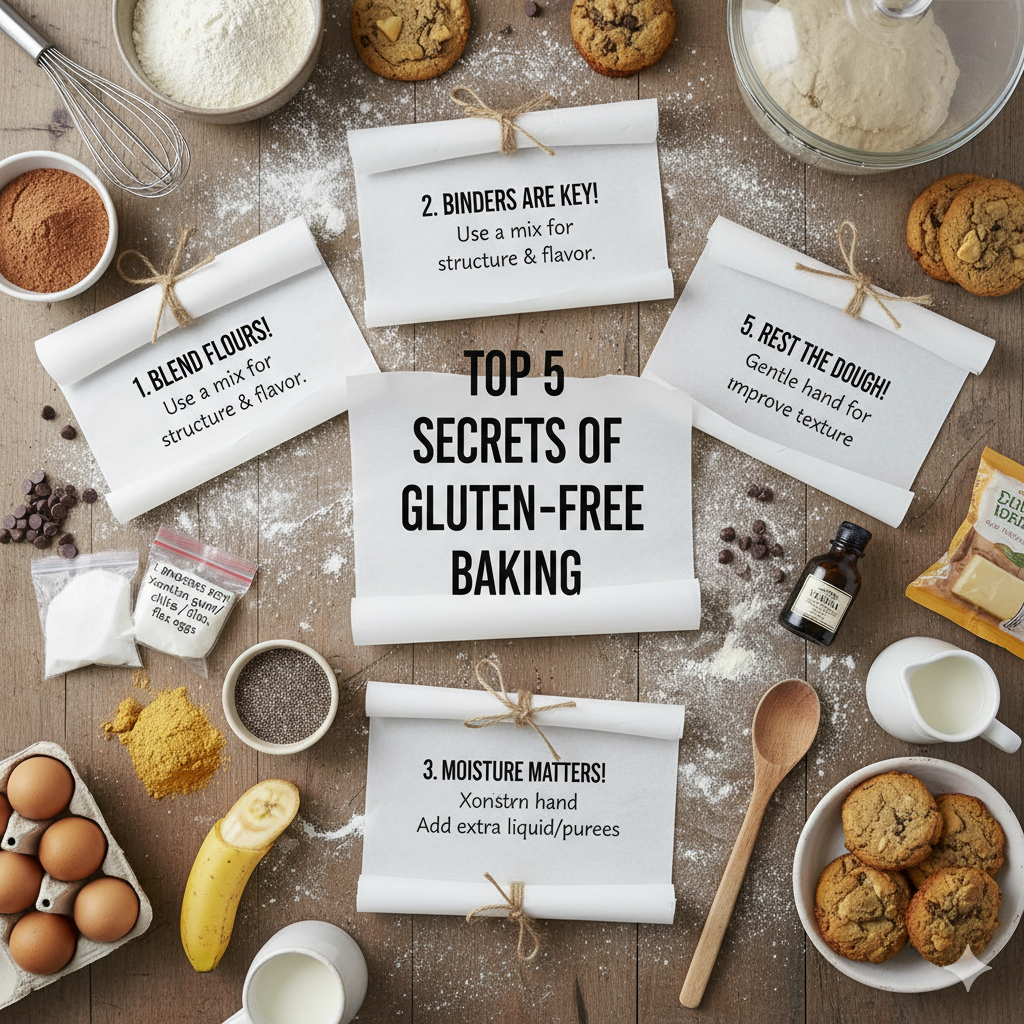
Our Top 5 Secrets for Gluten-Free Baking Success
Our Top 5 Secrets for Gluten-Free Baking Success
Baking without gluten can feel intimidating at first, but at Five Frogs Farm, we’ve learned that with the right approach, gluten-free baking is every bit as delicious, satisfying, and rewarding as traditional baking. After years of experimenting in our kitchen (and plenty of taste-testing!), we’re excited to share our top five secrets to gluten-free baking success.
1. Start with High-Quality Flours
Not all gluten-free flours are created equal. The flavor, texture, and nutrition vary widely between rice, sorghum, buckwheat, almond, and oat flours. For the best results, use flours that are certified gluten-free and freshly milled when possible. At Five Frogs Farm, our blends are formulated to balance structure, moisture retention, and taste—delivering gluten-free bread that’s hearty yet soft. There are many flours available on the market. If you focus on a gluten-free flour blend that states 1 to 1 on the label you have a better chance for a better outcome. A 1 to 1 blend is setup to mimic real flour with the binders already in the mix.
2. Use a Blend, Not Just One Flour
A single gluten-free flour can leave baked goods too dense, crumbly, or dry. That’s why most successful recipes use a gluten-free flour blend. Pairing rice flour with tapioca starch and sorghum flour gives structure, chewiness, and a hint of sweetness. Experiment with ratios to find your perfect mix—or start with a well-tested commercial blend. At Five Frogs Farm we have perfected multiple different flour blends for the different applications in different recipes.
3. Don’t Skip the Binders
Gluten provides elasticity and helps dough hold together. Without it, you’ll need a helping hand. Ingredients like psyllium husk, xanthan gum, or flaxseed meal act as binders, creating the chew and cohesion you expect in bread, muffins, or cookies. Even a small amount can vastly improve texture and shelf-life.
4. Hydration Is Key
Gluten-free flours absorb more liquid than wheat flour. This means your doughs might look wetter or stickier than you’re used to—and that’s actually good. Extra moisture helps prevent crumbliness and results in moist gluten-free baked goods that stay fresh longer. Don’t be afraid of a dough that looks “too wet”—it’s often just right.
5. Patience Pays Off
Resting your dough or batter gives time for the flours and binders to fully hydrate, improving flavor, texture, and structure. Even a 20–30 minute rest before baking can make a huge difference. Also, note that gluten-free breads often require longer bake times, so resist the urge to pull them out too soon. Pulling them too soon can result in a sunken loaf. We recommend internal temperatures of 205-210 to ensure the bread is completely baked throughout.
Bringing It All Together
Gluten-free baking isn’t about compromise—it’s about discovery. With the right flours, blends, binders, hydration, and patience, you can create delicious gluten-free baked goods that everyone (gluten-free or not!) will love.
At Five Frogs Farm, we bake every loaf and treat with these principles in mind. Whether you’re experimenting in your home kitchen or stopping by our gluten-free bakery in New Hampshire, we hope these secrets inspire you to bake with confidence.
✨ Pro tip: Want to skip the trial-and-error? Come see us or place an order—let your taste buds judge the difference experience makes.
